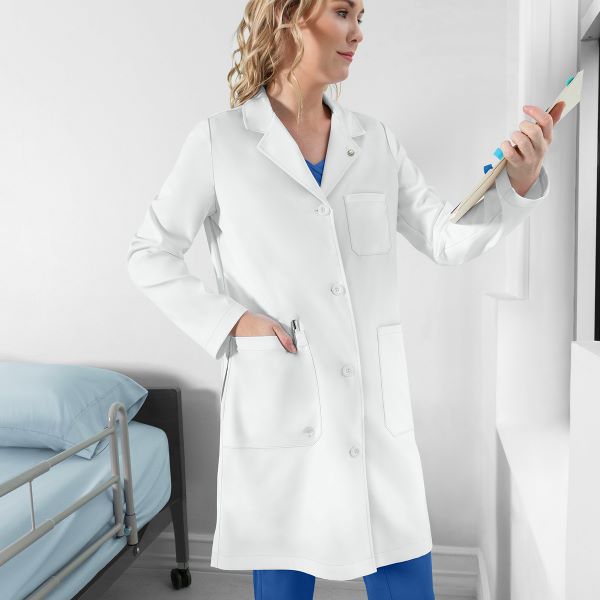Unlocking the Perfect Fit: The Complete Guide to Finding the Right Lab Coat
February 20, 2024
By: Angela White
In the world of science and healthcare, a lab coat isn't just a uniform; it's a symbol of professionalism, expertise, and attention to detail. However, the importance of a well-fitted lab coat goes beyond aesthetics. It plays a crucial role in safety, comfort, and overall efficiency in the laboratory.
In this guide, we'll delve into the nuances of finding the right lab coat fit to ensure you look and feel your best while working.

Understanding the Importance of a Proper Fit: Before we dive into the specifics, let's understand why the right lab coat fit matters.
- Safety: Ill-fitting lab coats can pose safety risks in the laboratory. Excess fabric or loose sleeves might catch on equipment or chemicals, leading to accidents.
- Professionalism: A well-fitted lab coat exudes professionalism and attention to detail, enhancing your credibility in the workplace.
- Comfort: Spending long hours in a lab requires clothing that allows for ease of movement and comfort. A properly fitted lab coat ensures you can work efficiently without feeling restricted.
- Image: Your appearance reflects your commitment to your work. A properly fitted lab coat contributes to a positive first impression and boosts your confidence.

Finding the Right Fit: Now that we understand the importance, let's explore how to find the perfect fit for your lab coat.
Consider Length:
- The ideal length of a lab coat should fall just below the knee or at mid-thigh. Too long, and it may hinder movement; too short, and it fails to provide adequate coverage.
- When trying on a lab coat, ensure you can comfortably bend, squat, and reach without feeling restricted.
Pay Attention to Sleeve Length:
- Sleeves should cover your wrists completely to protect your skin and clothing from spills or splashes.
- However, they shouldn't be too long to impede movement or risk getting caught in equipment.
Focus on Shoulder Fit:
- The shoulder seams of the lab coat should align with your natural shoulder line. Avoid coats with seams that extend beyond your shoulders, as they can appear oversized and sloppy.
- Ensure there's enough room in the shoulders to allow for free movement without feeling constricted.
Evaluate Chest and Waist:
- The lab coat should fit comfortably around your chest and waist without being too tight or too loose.
- Look for styles with adjustable features like buttons or belts at the waist to customize the fit according to your body shape.
Consider Fabric and Style:
- Opt for high-quality fabrics that are durable, easy to clean, and offer some level of fluid resistance.
- Choose a style that complements your body type and personal preference, whether it's a traditional button-down coat or a more modern zippered design.

In the fast-paced environment of laboratories, the right lab coat fit is more than just a matter of style—it's a critical component of safety, comfort, and professionalism.
By paying attention to details such as length, sleeve fit, shoulder alignment, and fabric choice, you can ensure your lab coat not only looks good but also enhances your performance and confidence in the workplace. Remember, a well-fitted lab coat is not just a garment; it's a reflection of your dedication to excellence in your field.
